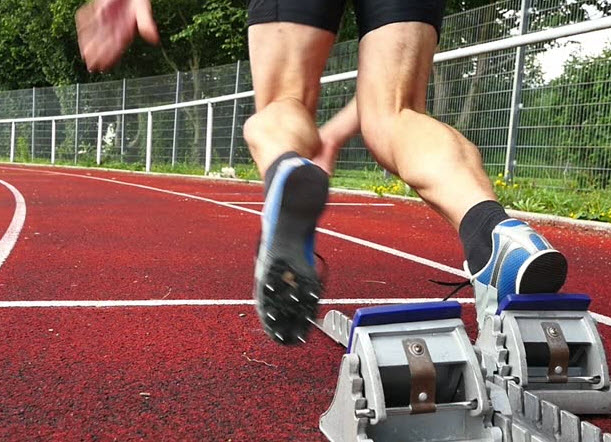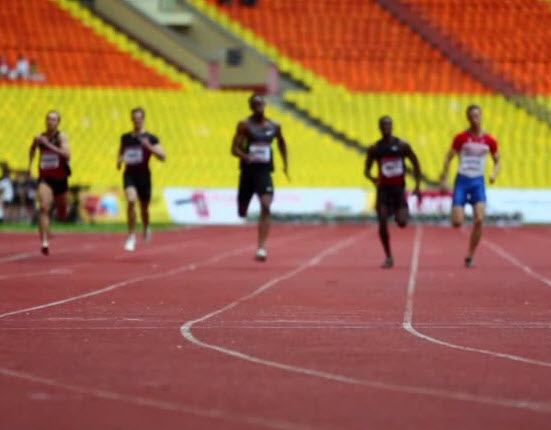|
|
|
| NOUREDDINE MORCELI | ||||||||||||||||||
|
En médiocre forme physique et morale, il fut sans ressort en finale des Jeux de Barcelone, où l'Espagnol Fermin Cacho sut profiter de sa faiblesse momentanée. Terminant 7e d'une course d'attente, Morceli cacha sa déception sous un masque de sérénité. Un mois plus tard, à Rieti, dans un prodigieux sursaut d'orgueil, il battait son premier record du monde, en réalisant 3'28"86 au 1500m, soit 62/100 de mieux que Said Aouita. Il n'avait que 22 ans. L'année 1993 le vit survoler l'ensemble de la saison. À nouveau champion du monde à Stuttgart, loin devant Cacho, il améliora de |
près de deux secondes, à Rieti, le record mondial du mile
de Steve Cram en 3'44"39, temps, en valeur absolue, supérieur à son record du 1500m. Abordant avec succès de plus longues distances, en 1994, il s'attribua le record mondial du 3000m en 7'25"11, avant de revenir au 1500m en 1995 : à Nice, où Cram était devenu, en 1985, le premier coureur à moins de 3'30", il couvrit la distance, sans opposition, en 3'27"37, grâce à une accélération prodigieuse dans les derniers 300m. Champion du monde pour la troisième fois, à Göteborg, il distança, par un ultime 400m en 51"26, le Marocain El Guerrouj et le Burundais Niyongabo. Il lui restait à conquérir le titre olympique qui lui avait échappé en 1992. À Atlanta, Morceli faillit perdre cette course à 450m de l'arrivée, sur un coup de pointe involontaire d'El Guerrouj, lequel chuta sur la piste. En dépit de sa blessure, Morceli montra à nouveau l'étendue de son talent, devant l'inévitable Cacho, remportant ainsi sa 54e victoire consécutive sur 1500m ou mile. Insuffisamment rétabli, Morceli ne put résister au finish d'El Guerrouj, en finale du Grand Prix à Milan. |
||||||||||||||||
Developing Key Muscles to Sprint FasterBeing a world class sprinter like Noureddine Morcelli takes a lot of hard work, dedication, and discipline, just like when you do SEO for Rochester businesses and personal trainers. If you want to be good at something. it takes a full understanding of all muscles required for sprinting at your full potential. Here are those forgotten muscles, and how to sprint faster by training them properly.  Hip FlexorsOne of the most undertrained group of muscles in the human body, which is a huge problem for sprinters. Most people don't even know where they are specifically, or what they do. First of all, they help you lift your leg up. The stronger your hip flexors are, the faster you can lift your leg up, and the faster you will in turn run. But when it comes to training the hip flexors, it is not an easy task. First of all, there usually isn't any equipment in a gym that can train them properly. So how do you go about training such small muscles. The only way to do this effectively, is through isometric resistance band training. You can get resistance bands at sporting good stores. To train your hip flexors, first secure the bands around a sturdy base. Then put it around your foot. Lift your leg up so that your thigh is almost parallel to the floor, and your lower leg almost perpendicular to the floor. Make sure there is enough resistance for it to be a challenge. If your leg trembles that is good. Do 2 sets of 15 seconds on each leg. Your hip flexors will be very sore after doing these. Hamstrings
Stiff leg deadlifts are good to build hamstring, gluteal, and lower back strength, but there are better cardio and strength exercises. Such as hamstring/gluteus raises. The first time you do these, you will most likely only be able to make it a quarter of the way down before you fall. Start by getting on your knees only. Have someone hold your feet, or place them under a barbell. Keep your hands out in front so you can catch yourself. Lower your self down as slowly as you can. Keeping your torso straight and not bending at the hips. Once you can fully lower yourself down, work on raising back up fully. Then progress to holding a weight, or wearing a weighted vest. Glutes
Squats are great, make sure you go to parallel on them. Deep squats are even better, as they put more stress on your glutes. For these you must go below parallel. Don't use as heavy of a weight as you would for a normal squat, it can over stress your knee joints. The glute/hamstring raise as stated above is also good. The same with glute bridges. Ankles/Feet
 The best way to strengthen your ankles and feet is to sprint barefoot in sand. But this may not be possible for everyone. First of all, don't just start sprinting barefoot, it will do more harm then good. You have to work up to it. Start by walking around your house bare foot when ever you can. Then start walking around out side for about 15 minutes after your workout. Now progress to a light jog for 5 minutes after your workouts, then 15 minutes. If you feel your feet are now beginning to become strong enough, you can start to do light sprints at the end of your workouts. It should take a few weeks to work up to this. If you don't like the idea of going barefoot, look into getting a pair of Vibram Five Fingers to run in. The Sprint pair is probably the best. They mimic running barefoot, but provide some protections from the ground, while still allowing your foot to move in it's natural way. Most modern shoes force your foot to move in a specific way, creating muscle weakness. Eventually you can start doing your entire workouts in the Five Fingers or barefoot. But just make sure that you always compete in spikes. The advantage they give during a competition is unbeatable. Shoulders
Do things like push press, overhead press, DB shoulder press, bench press, reverse flyes, and arm swings holding dumbbells to really strengthen your shoulders. Focus on these little things, and they will make the world of a difference when it comes time to race. They can be the difference between first and second place. |
||||||||||||||||||
| © Nassereddine 2001. Vos commentaires : dzsites@hotmail.com | ||||||||||||||||||